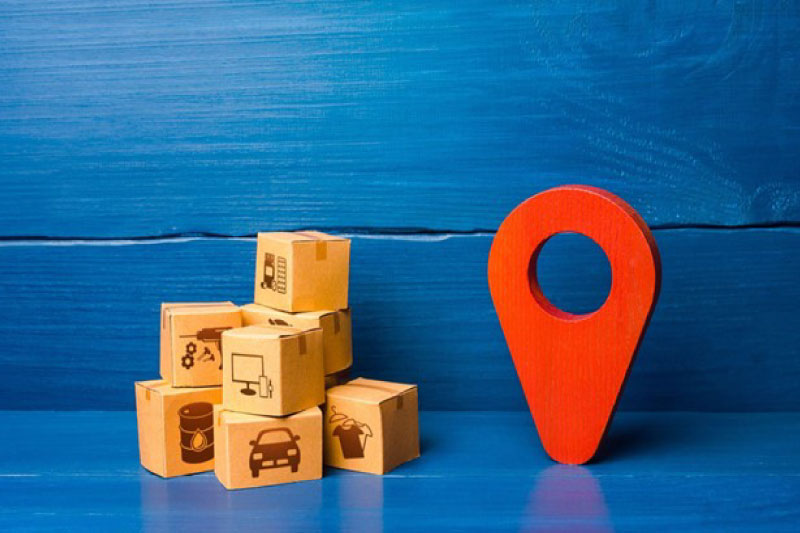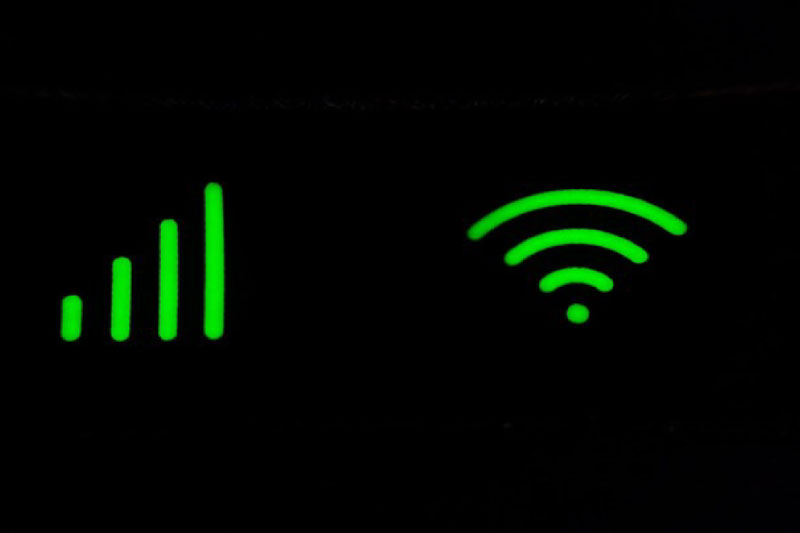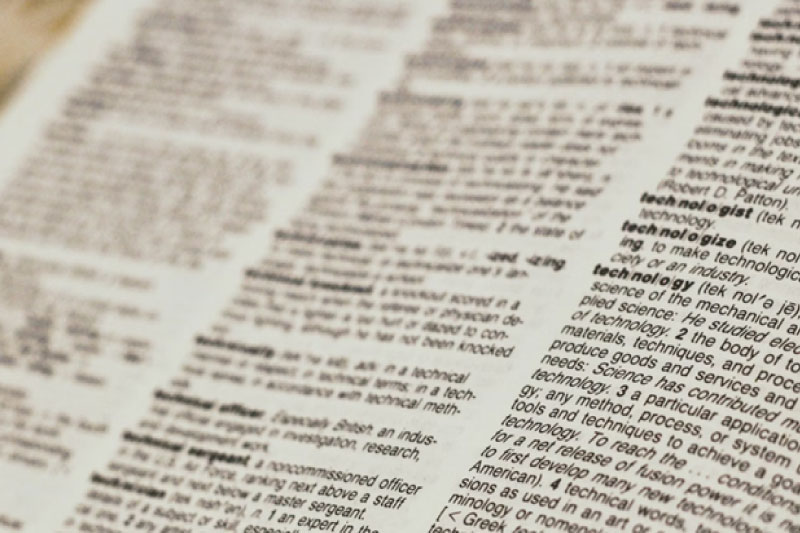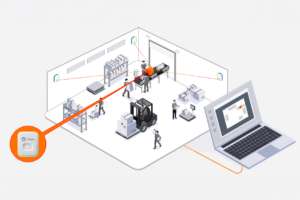Real-Time Location Systems (RTLS) have enabled tracking of people and assets across various industries, improving safety, operational efficiency, and business visibility. Whether it’s tracking valuable equipment in a warehouse or monitoring the movement of patients in a hospital, RTLS provides real-time visibility and accurate location information across varying use cases.
In this comprehensive guide, we will delve into the key concepts and vocabulary of RTLS technology, exploring the different components, technologies, and applications.
So, let’s embark on this journey to uncover the inner workings of RTLS and how it can benefit businesses in numerous sectors.
What is RTLS Technology
RTLS is a technology that allows companies to track and locate their assets or people indoors or outdoors in real-time, and it’s becoming increasingly popular in various industries, helping organizations enhance safety and operational efficiency.
By using a combination of hardware and software, RTLS uses different technologies like Ultra-wideband (UWB), Wi-Fi, Bluetooth, RFID, and GNSS to locate an object or person, and then transmit the data to a central system. This introduces a world of opportunities in sectors such as healthcare, manufacturing, logistics, and retail, enabling organizations to efficiently manage their operations from one place.
Understanding RTLS is vital, especially for professionals who work in these sectors, as it provides many possibilities that can boost their company’s productivity and accuracy.
RTLS Technology Usage Area
Real-Time Location Systems (RTLS) are altering the way we track and manage resources, people, and assets. They have emerged as game-changing solutions in several industries. The extensive use of RTLS systems has greatly improved operational effectiveness and safety across a wide range of application domains.
Healthcare RTLS
Healthcare RTLS is instrumental in addressing the intricate challenge of managing and tracking medical equipment within hospitals. Through precise RTLS tracking, healthcare facilities gain continuous, real-time visibility into the location of critical assets. This ensures that essential resources are promptly accessible, fostering a responsive environment that contributes to enhanced patient care and operational excellence.
Warehouse RTLS
In the warehousing domain, the implementation of Real-Time Location Systems (RTLS) technology emerges as a transformative force for inventory control, order fulfillment, and shipment tracking. RTLS warehouse systems redefine how organizations manage their stock, streamline order processes, and track shipments in real-time, creating a paradigm shift in warehouse efficiency.
RTLS Technology Benefits
Real-time location systems, or RTLS, have become extremely useful instruments with a wide range of applications in many different sectors. Adoption of RTLS technology yields several benefits that have a major influence on productivity overall, resource optimization, and operational efficiency.
Enhanced Asset Visibility
Real-time location information on assets, such as medical equipment in the healthcare industry, goods in warehouses, and cars in transportation, is made possible by RTLS technology. Organizations can easily track assets thanks to this increased visibility, which lowers the possibility of losing or misplacing them.
Optimized Resource Utilization
RTLS gives businesses the ability to measure and monitor resources accurately, which helps them make the most use of their resources. The real-time data that RTLS systems provide, about inventory, staff, and equipment, enables better resource allocation and prevents inefficiencies through informed decision-making.
Improved Operational Efficiency
RTLS contributes to streamlined processes and workflows. By providing real-time information on the location and status of assets, organizations can reduce delays, minimize bottlenecks, and enhance overall operational efficiency. This is particularly crucial in industries where time-sensitive actions are paramount.
Components of an RTLS System
An RTLS system consists of several key components that work together to enable location tracking and management. These components include tags, anchors, nodes, and a location engine.
Tags And Beacons
A crucial component of real-time locating systems is the tag or beacon. These small devices are attached to assets or people and emit signals at regular intervals. Beacons use Bluetooth Low Energy (BLE) or Ultra-Wideband (UWB) technology to communicate with the receiver nodes that are placed around the facility.
Tags have a longer battery life and can be rechargeable, while beacons require power from a source such as a wall outlet or battery.
Receivers
Receiver nodes, or anchors as they’re also called, capture the signals emitted by the tags/beacons and transmit them to the central server for processing. The nodes can be mounted on the walls, ceiling or placed on a stand for easy relocation. The number of receivers required depends on the size of the facility and the number of assets being tracked.
Large facilities may require hundreds of these location sensors deployed to provide full coverage, while small facilities may only need a few.
Software
The software is the engine that powers the RTLS technology. It receives data from the receiver nodes and translates it into meaningful information that can be used for location-based services such as asset tracking, personnel tracking, or way-finding.
The software also provides a dashboard that displays the location and status of all assets in real time. The dashboard can be accessed from any internet-enabled device such as a laptop, tablet, or phone.
Network Infrastructure
The network infrastructure is another important component of RTLS technology. The receiver nodes communicate with the central server over an Ethernet or Wi-Fi connection. The software runs on a dedicated server or cloud-based service that can handle the volume of data generated by the tags and receivers.
The network must be designed and installed with redundancy and fault tolerance in mind to maximize uptime and reliability.
Location Engine
The location engine is the core component of the RTLS system responsible for processing the received data and calculating the real-time location of the tracked objects. The location engine software utilizes advanced algorithms and techniques to triangulate or trilaterate the signals received from the tags and determine their precise location within the RTLS environment.

Technologies Used In RTLS
RTLS can be implemented using various technologies, each with its advantages and limitations. Some of the commonly used technologies in RTLS include Ultra-Wideband (UWB), Radio-Frequency Identification (RFID), Wi-Fi, and Bluetooth Low Energy (BLE).
Ultra-Wideband (UWB)
Ultra-Wideband technology utilizes short-duration pulses to transmit and receive data. UWB-based RTLS technology provide highly accurate and precise location information, making them suitable for applications that require high granularity. UWB can achieve sub-meter accuracy and is particularly effective in complex indoor environments.
Radio-Frequency Identification (RFID)
Radio-frequency identification (RFID) technology-based RTLS systems rely on readers and antennas to detect and communicate with RFID tags. It employs electromagnetic fields that automatically track and identify tags attached to objects. RFID is widely adopted due to its cost-effectiveness, scalability, and compatibility with existing infrastructure.
Wi-Fi-Based RTLS
Wi-Fi-based RTLS leverages existing Wi-Fi access points and infrastructure to track the location of Wi-Fi-enabled devices. By analyzing the signal strength and time of arrival of Wi-Fi signals, the RTLS system can determine the approximate location of the tracked devices. Wi-Fi-based RTLS is convenient for organizations that already have Wi-Fi networks in place.
Bluetooth Low Energy (BLE)
Bluetooth Low Energy technology enables wireless communication between devices with low power consumption, such as mobile devices, computers, and such. BLE-based RTLS technology utilize Bluetooth beacons that transmit signals to nearby devices, allowing for proximity-based tracking. BLE is commonly used in applications such as asset tracking and indoor navigation.
Infrared RTLS
Infrared (IR) RTLS is ideal for businesses that require high-accuracy tracking of assets and people. IR RTLS uses sensors that detect infrared signals emitted by tags worn by employees or attached to assets. This option is highly reliable and accurate, but it requires a line of sight between sensors and tags and can be affected by ambient light.
GPS RTLS
GPS RTLS is ideal for businesses that require outdoor tracking of assets and people. GPS RTLS uses GPS satellites to determine location of people and assets within a given area. This option is highly accurate but has limited use indoors, where the GPS signal can be obstructed by walls and ceilings.

RTLS System Coverage
A well-implemented real-time location system enables businesses to efficiently track assets, reduce operational costs, and improve workflow efficiency. While the technology does offer numerous benefits, it’s only effective if implemented with the right coverage options.
Wide Area Coverage
One of the primary coverage options of an RTLS technology is wide area coverage. It enables organizations to monitor assets over a large area, such as a warehouse or manufacturing facility. This coverage option works using various technologies such as RFID, GPS, and Bluetooth beacons.
RFID technology is commonly used to achieve a wide range of wireless inventory tracking capabilities. It automatically detects assets within a specific range and provides instant alerts when they leave a predefined zone. Compared to GPS, RFID provides a more cost-effective solution for organizations that need to track valuable assets.
Local Area Coverage
Local area coverage is another coverage option, commonly used in localized settings such as hospitals, schools, or offices. It helps organizations keep track of the movement and location of critical assets within a specific area.
For instance, local area coverage can be used to track mobile medical equipment like portable ultrasound machines, wheelchairs, or IV pumps in a hospital setting. The system uses ultra-wideband to achieve more precise location information of assets. UWB provides increased accuracy by tracking objects to a few centimeters.
Choke Point Coverage
Choke points are another type of coverage option in RTLS systems. It utilizes the existing infrastructure in a building, such as doorways or gates, and enables real-time monitoring of assets that have to pass through them.
Choke point coverage can help monitor the movement of products from one area to the next and ensure compliance with safety measures and security. Additionally, this coverage option can be used to control access to sensitive areas and manage inventory records.

Positioning And Locating Methods in RTLS
RTLS technology employ various positioning methods to determine the location of tagged objects or people accurately. Some of the commonly used positioning methods include trilateration, dead reckoning, time difference of arrival, angle of arrival, and signal strength.
Trilateration
Trilateration is a positioning method that relies on the measurement of distances between the tagged object and multiple anchors. By calculating the intersection of the distance circles, the RTLS system can determine the precise location of the object. Trilateration is widely used in RTLS systems due to its simplicity and accuracy.
Dead Reckoning
Dead reckoning is a technique used in RTLS systems to estimate the position of a moving object based on its previously known position, direction, and speed. Dead reckoning can be combined with other positioning methods to improve accuracy, especially in environments where line-of-sight or signal coverage is limited.
Time Of Arrival Method (TOA)
TOA is a popular location indicator that determines the location of a device by calculating the time taken for a signal to reach the device from a known location. The time taken for the signal to travel from the known location to the device is used to determine the distance between the two. This method is typically used in applications that require high precision, such as navigation systems.
Time Difference Of Arrival (TDOA)
Time Difference of Arrival (TDOA) is a positioning method that measures the time it takes for signals to travel between the tagged object and multiple anchors. By analyzing the time differences, the RTLS system can calculate the distance and triangulate the object’s location. TDOA is commonly used in UWB-based RTLS systems.
Angle Of Arrival (AoA)
AoA is a positioning method that determines the direction of signals emitted by the tagged object relative to the anchors. By analyzing the angle of arrival of signals, the RTLS system can calculate the object’s location. AoA is commonly used in systems that utilize directional antennas or beamforming techniques.
Time Of Flight Method (TOF)
TOF is another popular location indicator that determines the distance between a device and a known location by calculating the time taken for a signal to travel from the known location to the device and back. This method is commonly used in applications that require high precision, such as long-range radar systems.
Received Signal Strength Indicator (RSSI) Method
This method works by measuring the strength of the signal received by a device. The signal strength is used to determine the distance between the device and the known location. This method is commonly used in applications that require low-cost positioning, such as asset tracking systems.
Signal Strength
Signal strength-based positioning relies on analyzing the received signal strength indicator (RSSI) of signals transmitted by the tagged object. By measuring the signal strength at multiple anchors, the RTLS system can estimate the object’s distance and location. Signal strength-based positioning is widely used in Wi-Fi and Bluetooth-based RTLS systems.
Types Of RTLS Tags
RTLS tags come in different forms and functionalities, depending on the specific requirements of the application. The three main types of RTLS tags are active tags, passive tags, and semi-passive tags.
Active RFID Tags
Active tags are battery-powered tags that continuously transmit their unique identifier signal. These tags have their power source, allowing for longer-range communication and real-time tracking. Active tags are commonly used in applications that require long-range tracking, such as vehicle tracking and outdoor asset management.
Passive RFID Tags
Passive tags do not have their power source and rely on the energy emitted by the RTLS system’s infrastructure to operate. These tags are cost-effective and have a longer lifespan compared to active tags. Passive tags are commonly used in applications that require proximity-based tracking, such as access control and inventory management.
Semi-Passive RFID Tags
Semi-passive tags, also known as battery-assisted passive (BAP) tags, contain a small battery that powers certain functionalities, such as transmitting the unique identifier signal. The battery in semi-passive tags extends the tag’s read range and enables real-time tracking capabilities. Semi-passive tags are commonly used in applications that require a balance between battery life and performance.

RTLS Solutions
RTLS technology finds applications in various industries, offering valuable solutions for asset tracking, indoor positioning, geofencing, and employee tracking.
Asset Tracking
Asset tracking is one of the key applications of RTLS, enabling businesses to monitor and manage their valuable assets in real time. RTLS systems can track the location and movement of assets, ensuring they are in the right place at the right time. This is particularly useful in industries such as manufacturing, logistics, and healthcare, where the efficient utilization of assets is crucial.
Indoor Positioning System (IPS)
Indoor Positioning Systems (IPS) based on RTLS technology enable precise location tracking within indoor environments. IPS can guide customers in shopping malls, assist employees in large facilities, and improve safety and security in hospitals. By providing precise location data and accurate indoor navigation, IPS enhances the user experience and streamlines operations in various contexts.
Geofencing
Geofencing is a location-based service that creates virtual boundaries or zones in real-world environments. RTLS-based geofencing can trigger automated actions or notifications when a tagged object or person enters or exits a designated area. Geofencing has applications in fleet management, security, and retail, allowing businesses to monitor and control movement within specific zones.
Employee Tracking
RTLS technology can be utilized to track the movement and location of employees within a workplace. This can be particularly useful in industries such as healthcare and manufacturing, where employee safety and efficient workflow management are critical. RTLS-based employee tracking systems can optimize resource allocation, improve response times, and enhance overall productivity.
Challenges and Limitations of RTLS
While RTLS technology offers numerous benefits, there are some challenges and limitations that need to be addressed for successful implementation.
Multipath
Multipath refers to the phenomenon where signals take multiple paths to reach the receiver due to reflection, diffraction, or scattering. Multipath can cause signal interference and impact the accuracy of reporting the exact tag location. Mitigation techniques, such as signal filtering and antenna placement optimization, are employed to minimize the impact of multipath.
Interference
Interference from other wireless devices or environmental factors can disrupt the signals transmitted and received by RTLS systems. Interference can result in inaccurate location information and reduced system performance. Advanced interference mitigation techniques, including frequency hopping and signal modulation, are employed to overcome this challenge.
Path Loss
Path loss refers to the attenuation or weakening of signals as they travel through space. The strength of the received signal decreases with distance, resulting in reduced accuracy and range in RTLS technology. Careful positioning of anchors, signal amplification, and power optimization techniques can help mitigate the effects of path loss.
RSSI Fingerprinting
RSSI fingerprinting is a technique used in signal strength-based positioning to create a database of signal strength measurements at known locations. However, RSSI fingerprinting is susceptible to environmental changes, signal interference, and other factors that can impact the accuracy of the system. Regular calibration and updating of the RSSI fingerprint database are necessary to maintain accurate positioning.
Advancements In RTLS
RTLS technology is constantly evolving, with advancements in hardware, software, and algorithms enabling more accurate and efficient tracking solutions.
Telemetry
Telemetry refers to the collection and transmission of real-time data from remote devices to a central system. In the context of RTLS, telemetry capabilities enhance the tracking and monitoring of assets by providing additional information such as temperature, humidity, or motion. Telemetry-enabled RTLS technology enable businesses to gather valuable insights and make data-driven decisions.
Zigbee
Zigbee is a wireless communication protocol that provides low-power, low-data-rate connectivity. Zigbee-based RTLS technology offer energy-efficient and cost-effective solutions for tracking and monitoring assets. Zigbee’s mesh networking capabilities allow for reliable communication, even in complex environments.
Final Thoughts on RTLS Technology Jargon
Real-Time Location Systems (RTLS) have transformed the way businesses track and manage their assets, people, and objects. From asset tracking in warehouses to employee monitoring in healthcare facilities, RTLS offers real-time visibility and accurate location information.
By understanding the components, technologies, and applications of RTLS, businesses can leverage this technology to optimize operations, enhance security, and improve efficiency. As RTLS continues to advance, we can expect even more innovative solutions that will revolutionize various industries.
And speaking of innovation, Litum offers the best in class real-time location tracking systems and software so you can grow your business efficiently and sustainably. At Litum, we take pride in being a globally recognized indoor tracking and real-time location systems & software provider.
To suit your specific tracking needs, we offer static RFID, zonal BLE, and real-time UWB RTLS tracking options, reducing costs and boosting performance. As an end-to-end solution provider, we offer a full line of sensors, tags, system design, and software.
Backed by a strong partner network across 50 countries, we are confident in our ability to help you give your customers a better experience and ensure sustainable business solutions. So, drop us a line and let us know how we can help you get started.




